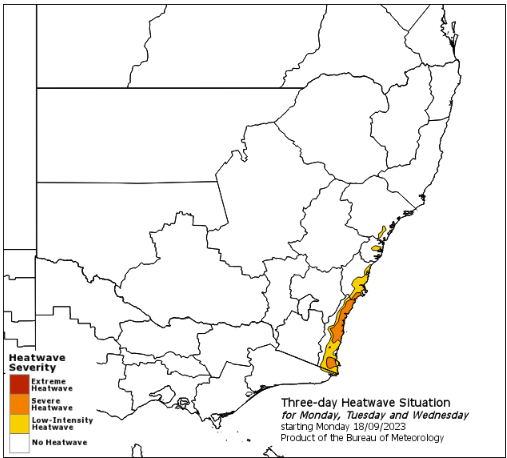Was this spring heatwave a sign of things to come this summer?
A record-breaking early-spring heatwave caused temperatures to soar across parts of southern and eastern Australia this week. So, was this abnormal early-season heat a sign of what’s to come this summer?
What is a heatwave?
While hot weather is common in Australia, heatwaves are responsible for more deaths across the country than any other natural hazard, including bushfires, tropical cyclones, and floods.
In Australia, a heatwave is defined as three or more days of unusually high daytime and nighttime temperatures in an area.
While hot days can be uncomfortable on their own, the combination of abnormal heat during both day and night can significantly increase stress on the human body. High overnight temperatures also give the daytime heating a head start, which can allow the mercury to reach uncomfortable levels early in the day and increase further into the afternoon.
The Bureau of Meteorology (BOM) assesses heatwave risk by taking the forecast maximum and minimum temperatures for a three-day period and comparing it to the average temperature for the time of year, and the observed temperatures during the last 30 days.
The Bureau’s national heatwave service is classified into three levels based on intensity:
- Low intensity heatwaves are common in summer and most people can cope with them
- Severe heatwaves are challenging for vulnerable people and are less frequent
- Extreme heatwaves can affect healthy people, particularly those that work outdoors, and are rare
The map below shows an example of the heatwave severity forecast in action from southern NSW earlier this week.

Image: Three-day heatwave situation for Monday, Tuesday and Wednesday, September 20, Source: BOM
According to the World Health Organisation (WHO), 166 000 people died worldwide due to heatwaves between 1998-2017.
Heatwaves can also increase bushfire risk and affect power and transport networks.
What causes a heatwave?
Heatwaves occur when an unusually hot airmass lingers over a region for several days and nights. In Australia, heatwaves are often caused by slow-moving or stationary blocking high-pressure systems, which cause stagnant weather patterns and allow heat to build.
Other climate influences that can exacerbate extreme heat in Australia include El Niño, a positive Indian Ocean Dipole (IOD), the Madden-Julian Oscillation (MJO) drought and climate change.
Heatwave forecast for this spring and summer
El Niño and a positive IOD are currently underway. This climate driver double-up will significantly increase the likelihood of unusually warm and dry weather across large areas of Australia in the second half of 2023 and early 2024.
While El Niño is known to increase the risk of extreme heat across southern Australia, multi day heatwaves are actually less common when El Niño is in place, especially in southern Australia. This is because weather systems tend to sweep across southern Australia more quickly during El Niño years, reducing the likelihood of stubborn prolonged heat.
However, with several warm-phase climate drivers affecting Australia’s weather in the coming months, extreme heat and heatwaves are both likely to be a feature this spring and summer.